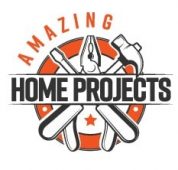Planning for a big project your home, or a remodeling? And want to do the project by yourself?
It’s common for many home owners these days to plan (and perform!) a home improvement project themselves, knowing they can eliminate the labor expense and many times save tons of money from hiring a contractor.
As I know firsthand, do-it-yourself activities are interesting, fun, and gratifying. When you do something from start to finish it is immensely satisfying to see the end product. However, engaging in a do-it-yourself task is sometimes tricky; especially if you are not very experienced at DIY projects. Thankfully the Internet and YouTube has helped to level the playing field.
I also wanted to share a few tips I’ve picked up along the way. I know many of these be common sense and seem beginner, but since we ALL start as beginners, I thought this would helpful for some folks out thre!
Here are few of the important “ground rules” safety tips for the do-it-yourselfers:
- When working with some hazardous materials, wear protective clothing! Get a good pair of safety goggles and gloves that you can wear while doing your home improvement tasks.
- Use a mask while working in dusty conditions, especially if you are sawing wood. Your lungs will thank you later. Plus some particles can cause long-term damage, too. Not good!
- If you are considering house painting, keep the room well-ventilated…and don’t smoke nearby! (Although you probably shouldn’t be smoking at all, but that’s a topic for another site). 😉 Personally, I love portable HEPA air purifying units. You can get them at Costco or online for a great price…and they make a noticeable difference in your environment.
- Along the same lines, you are working with materials that provide toxic fumes, it is always important to make sure that the room is airy and well-ventilated.
- Employ good quality equipment while working. Always use the right tools for the right job! The added cost is worth it in the end.
- Speaking of tools, keep the tools in a safe place. If you have kids or pets, you want them in some place you can keep them out of reach (and ideally locked).
- If you are using knives, cut with the blade facing away from you. For those who were Boy Scouts, you should remember that rule. 🙂 And when you’re done using them, lock them.
- When fixing or checking electrical connections, it’s advisable to switch off the power at the very least (and depending on the project…remove the fuse.) When dealing with electricity, wear rubber shoes, too.
- While fixing or examining electrical appliances, unplug it. (Like I said…some of these tips are common sense, but you’d be surprised!)
- Every homeowner must keep a chemical fire extinguisher at home! Many experts often advise to avoid using water to put out a fire caused by electricity. And for some bigger projects involving electrical or gas work…consider a professional if you’re at all nervous or unsure.
- Employ a drill that has a plastic body, as it will not conduct electricity. Also, remove the plug from the socket while fitting parts. Avoid wearing loose clothes or jewelry as they might get entangled in the drill.
- Using a ladder? You might be surprised to hear that many are often the cause of DIY accidents. Bfore assembling a ladder, read the instructions carefully and assemble according to the manufacturer’s guidelines. And have a spotter nearby to sure your ladder won’t move.
- If the job you are about to perform involves the disposal of dangerous material, it is best to contact your local environmental health department for advice.
And just to stress the point… whatever the job , it is critical that you plan out your work carefully. Make sure that you can do-it-yourself, otherwise hire a professional to do the tasks. Consider your skills honestly, and your actual timeline. Ask for help when necessary!
Stay tuned for Part 2 where I’ll share some bathroom DIY tips!
